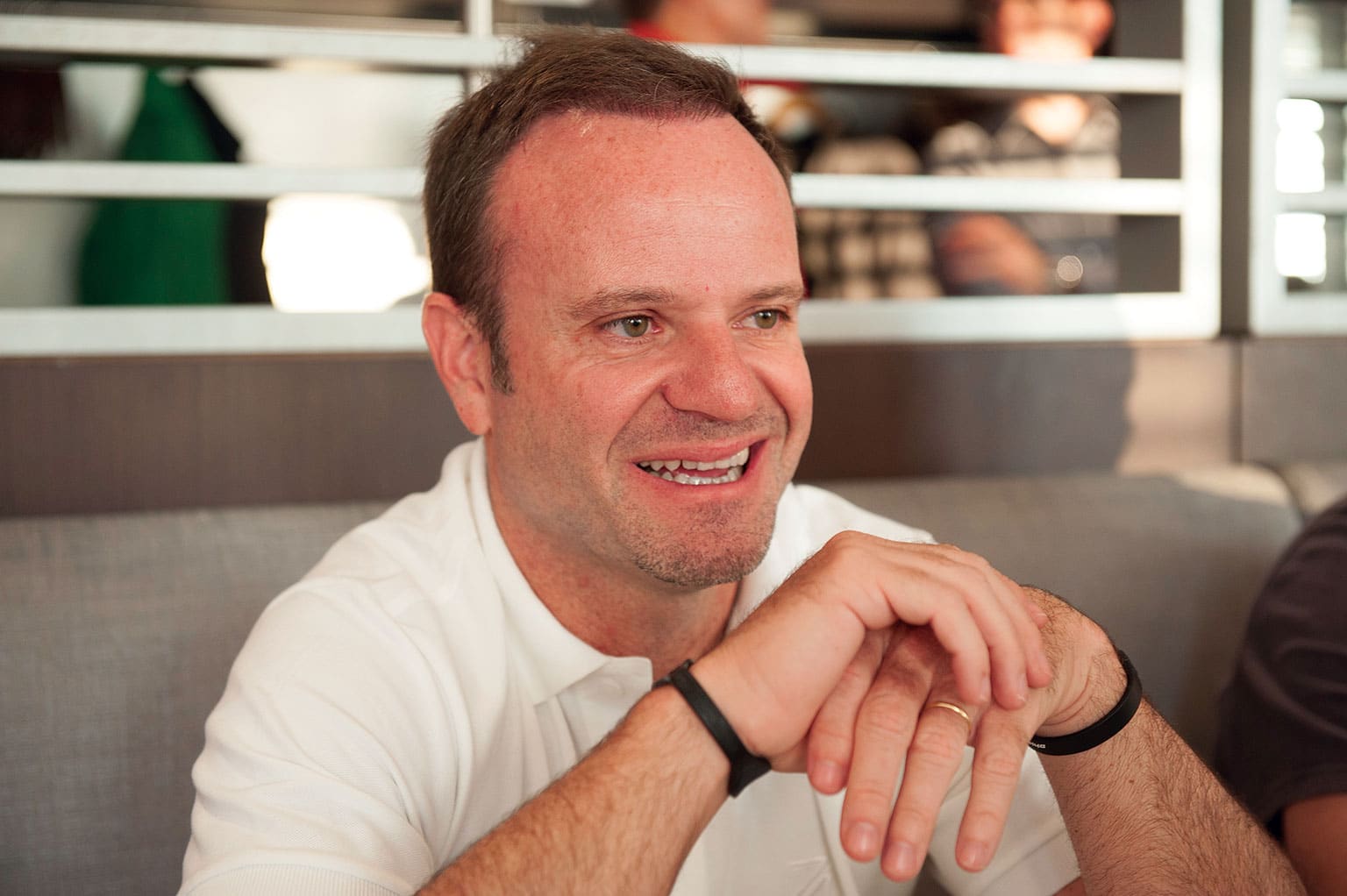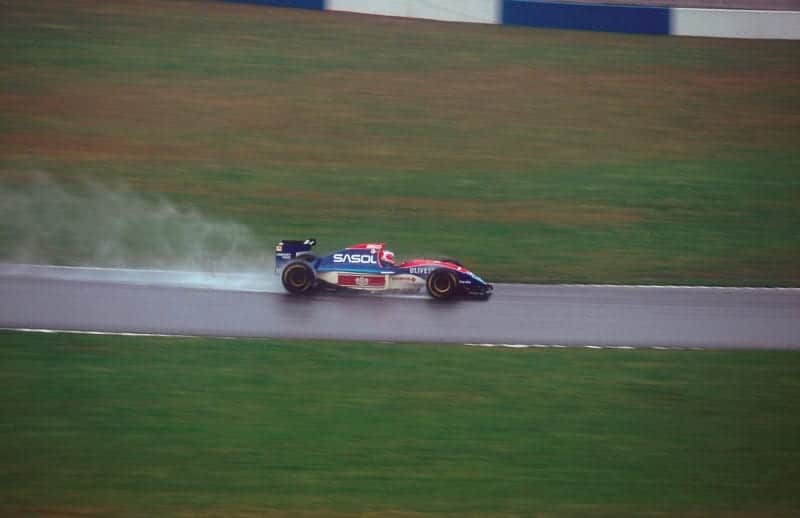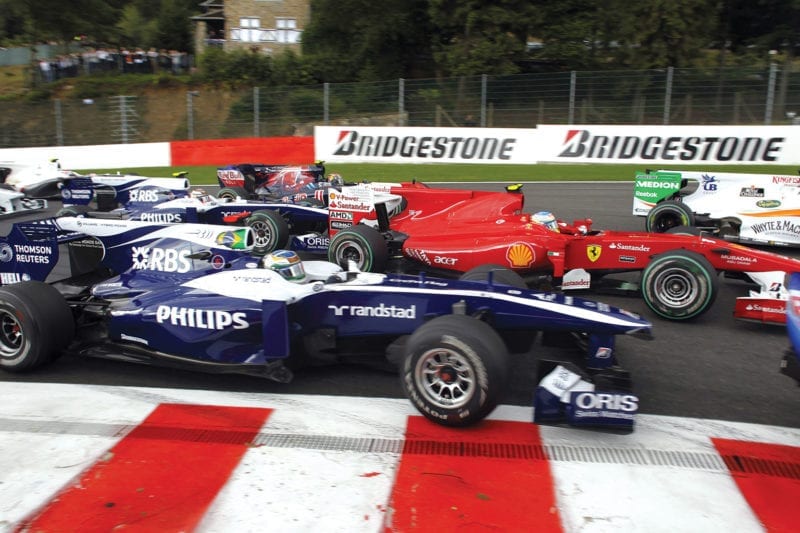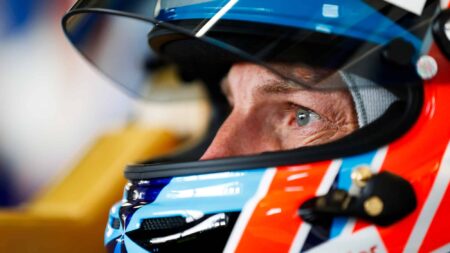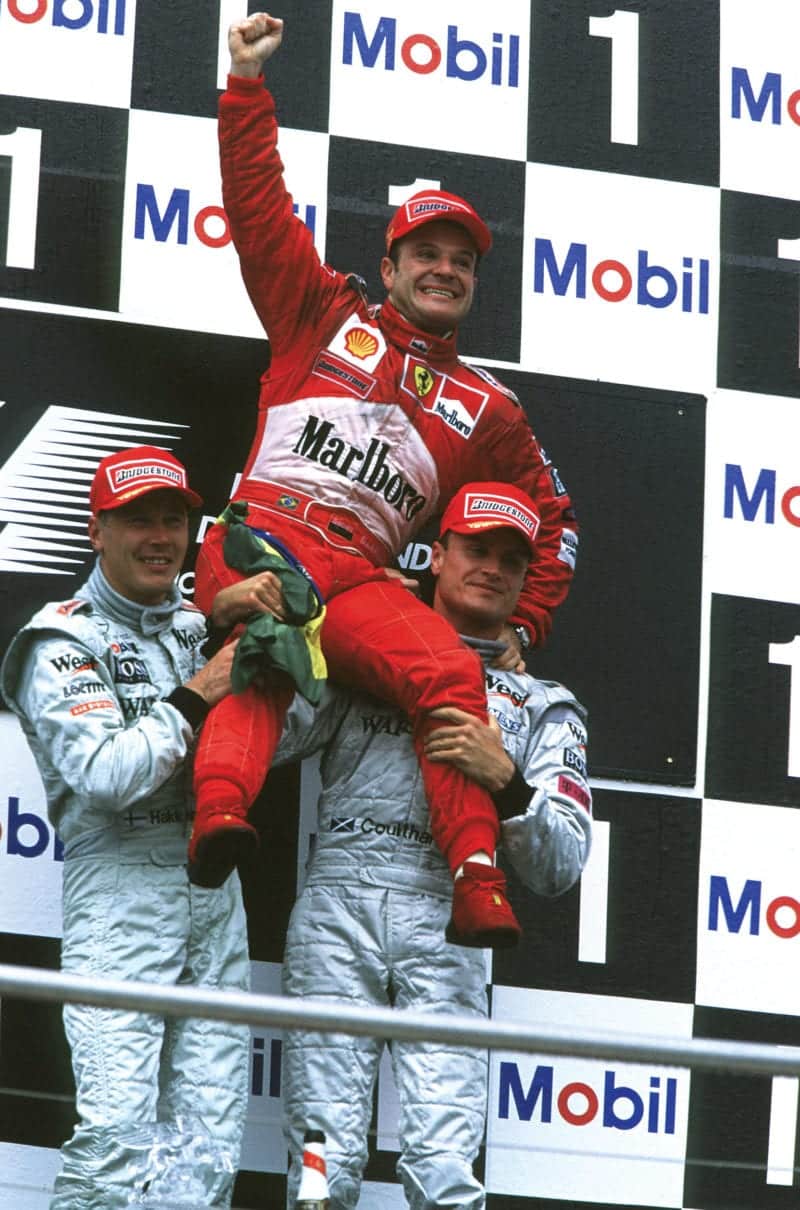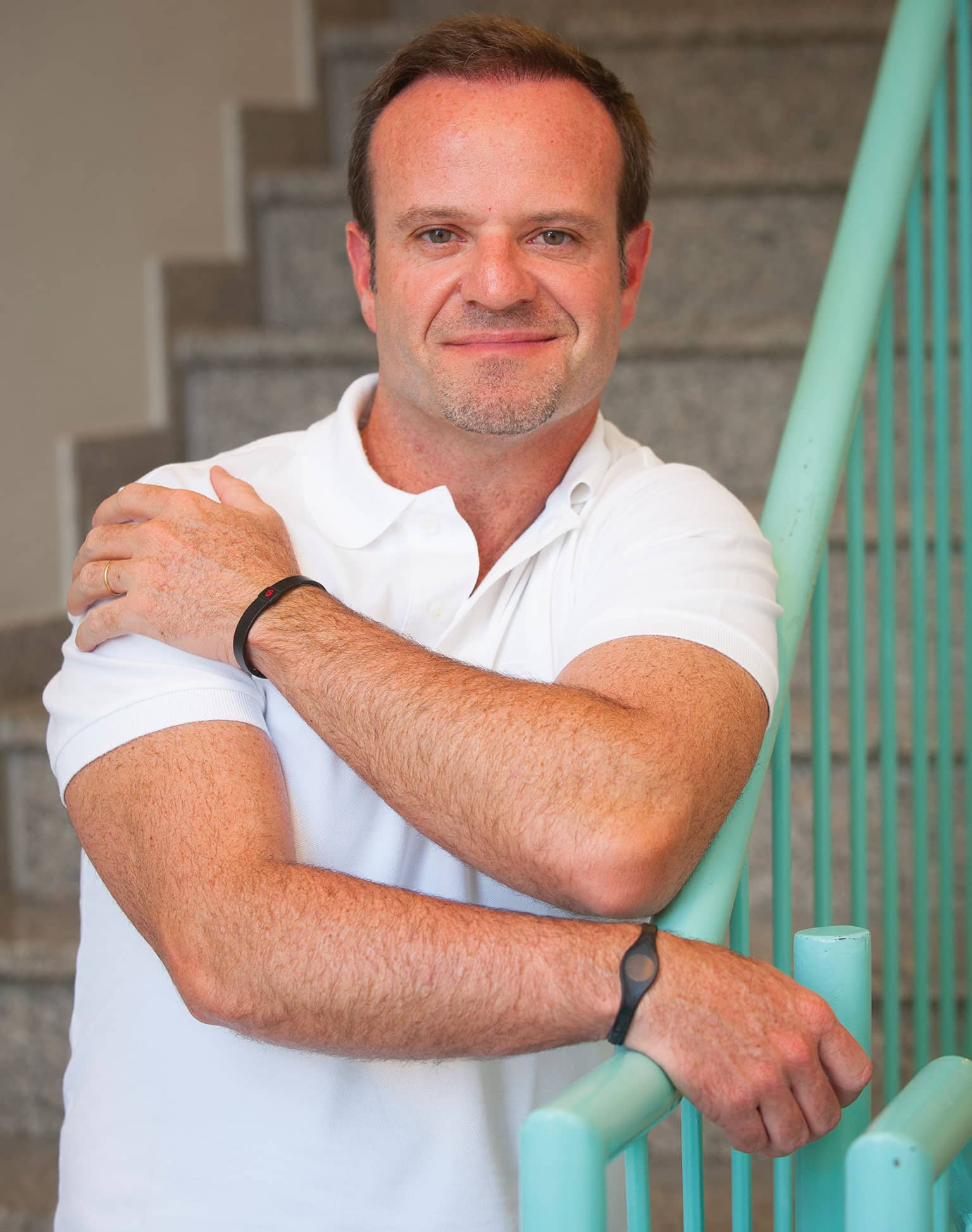“In the end I was third in the Formula 3000 Championship, but already during that season Formula 1 teams were starting to talk to me, especially Ken Tyrrell and Eddie Jordan. I still had the Arisco backing, which helped of course, but it wasn’t a lot of money. The deal I had with the owner of Arisco was that he would pay for me until I got to F1 and then, once I was earning, he would become my partner, and I would pay him 25 per cent of everything I made. Later the company was sold, but I continued to pay that guy a quarter of all I earned, and still do to this day. That was the deal, and I feel quite happy about it. It took $2 million to get me to the point where I was earning my way in Formula 1, and without him I couldn’t have done it. If I have 10 bucks today, it’s because he put in two bucks 20 years ago.
“So I signed with Eddie Jordan for 1993, and there I was, in Formula 1. Eddie was funny — he still is funny. At first I think he was just after my money, but when he saw what I was capable of doing in his car, he changed a bit towards me. My third F1 race was the European Grand Prix at Donington Park, in the wet. I was still only 20. You remember it was very wet and slippery. I was 12th on the grid, and at the end of the first lap I was fourth.”
“When Jordan saw what I was capable of doing, he changed a bit”
Even more incredibly, by two-thirds distance Rubens was up to second behind Ayrton Senna’s flying McLaren. Another pitstop dropped him to third, but he was looking sure of a podium when, with five laps to go, the car stopped. “I had run out of fuel, but Eddie told the journos it was a fuel pressure problem, because that sounded better.”
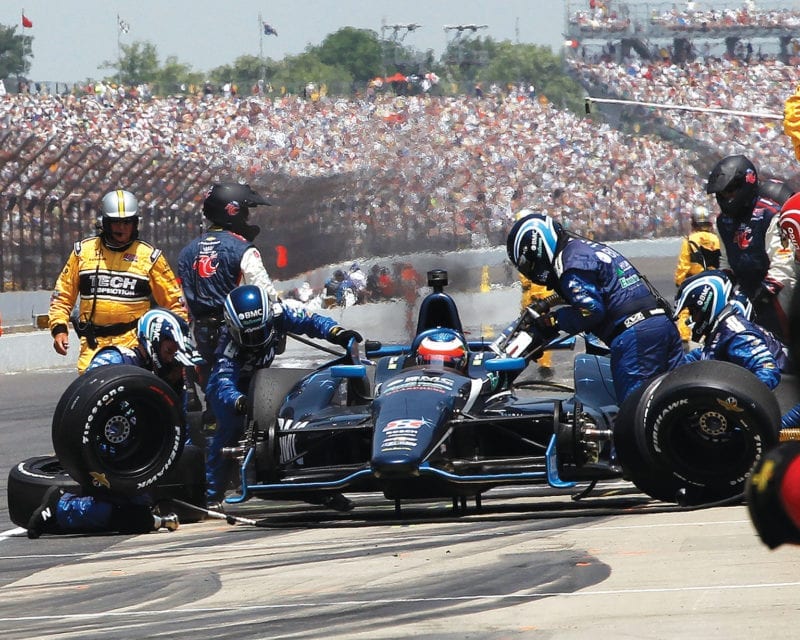
Rubens spent a season in IndyCar last year
Motorsport Images
During that first season Rubens had several more strong races in the little Jordan-Hart, scoring his first points at Suzuka with fifth place. For 1994 Eddie Irvine was in the team, although Rubens scored more than three times the Irishman’s points total that season. In the opening round at his home circuit of Interlagos he was fourth, and in round two at Aida he climbed to second before losing out to Gerhard Berger’s Ferrari in the closing stages and finishing a delighted third — his, and Jordan’s, first podium. Remarkably, at this stage in the season he lay second to Michael Schumacher in the World Championship.
A fortnight later came the tragic events at Imola. The first bad accident was in Friday qualifying when, on his first flying lap, Rubens went off at the Variante Bassa.
“I had done a good time in the morning, I had new tyres on the car, and I reckoned I could qualify eighth. I was flying. But [Jordan technical chief] Gary Anderson said on the data I was 8kph faster there than I had been before, so maybe I was just a little bit too quick.” The kerbs launched the car, which cartwheeled into the debris fencing before bouncing back to land on its side. “I had a big bang on the head, so I don’t remember much about it. Prof Watkins told me later that when he got to me I had swallowed my tongue, I was choking to death. He put his hand down my throat and pulled it out. He saved my life. When I came round in the medical centre, the first face I saw was Ayrton’s, with tears in his eyes. I had never seen that with Ayrton before. It was as though my accident had happened to him.”
The next day Roland Ratzenberger was killed when his Simtek went off at Tosa, apparently because of a front-wing failure. Then in Sunday’s race came Ayrton’s own fatal accident. “I had a bond with Ayrton from when I first came into Formula 1. He was already three-times world champion, of course, but when I did my first Grand Prix, at Kyalami in March 1993, he took time to come down to the Jordan pit to see me. He seemed to like it that there was another young Brazilian coming in, and I think maybe he saw a little bit of himself in me from his early career. I appreciated his support very much. Afterwards, all the headlines, all the grieving around the world, all the media attention, it was a terrible time. I had never been to a funeral before. Luckily I don’t remember very much of those days after Imola, because I was still recovering myself, and that helped me to move on.”
“I’d ask Irvine, ‘What gear are you taking?’ And he’d say, ‘I dunno.’”
There were five third-row grid positions and four more fourth places that season, but the high spot was pole for the Belgian Grand Prix at Spa, another first for Jordan. On Friday, on a wet track that was beginning to dry, Rubens gambled on slicks in the dying moments of the session, and beat Michael Schumacher to provisional pole. “I prayed that the weather would be even worse for Saturday, so nobody could beat my time. And it was. My time survived.” At 22 years 3 months 4 days, he was then the youngest driver to take an F1 pole.
Eddie Irvine proved an unusual team-mate. “He was a different kind of guy, and I had to learn about him. I’d ask him, ‘What gear are you taking at Copse?’ And he’d say, ‘I dunno.’ Like he was being secretive, but it wasn’t that. It was because he just didn’t care. I was young, and I thought he was trying to play with my mind. But he wasn’t interested in that stuff. He did what he was supposed to do, he enjoyed the speed and that was it. As soon as I understood that, we got on pretty well.” In 1995 Jordan switched to Peugeot engines.
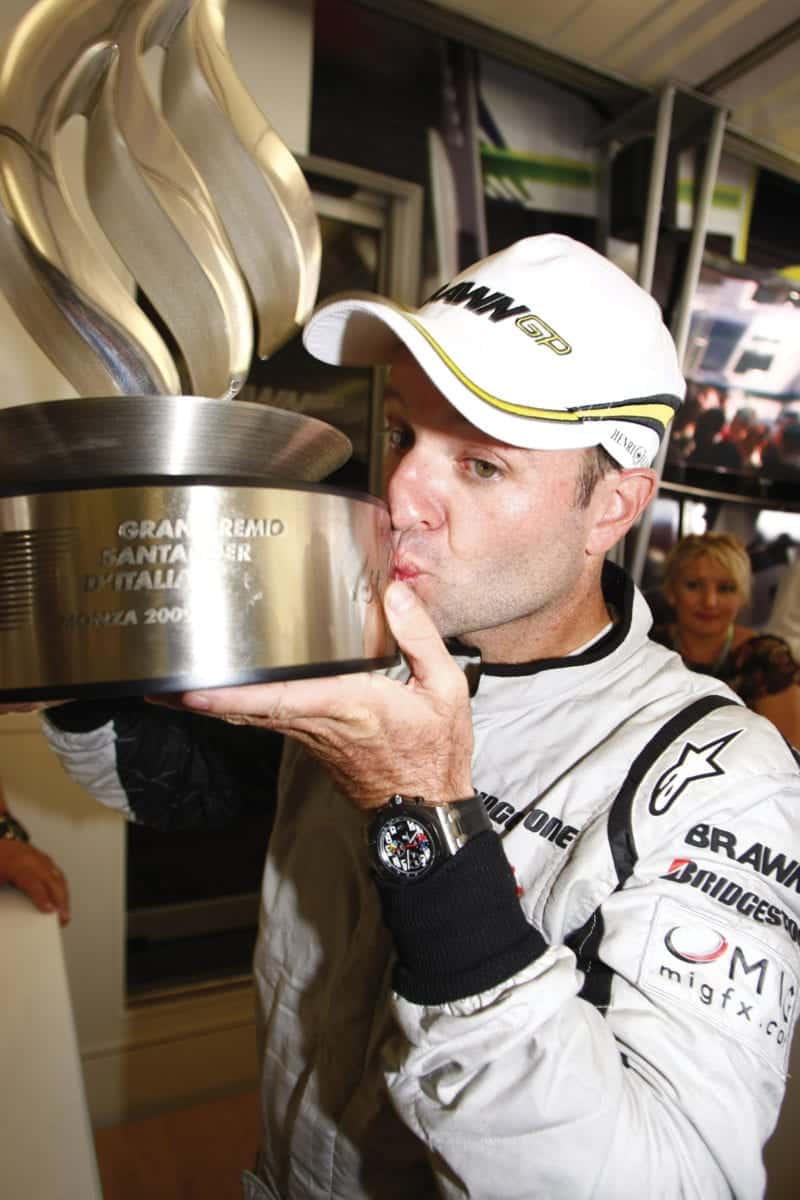
Savouring his second victory of Brawn, Monza 2009
Motorsport Images
“We were expecting to be much more competitive than we were. We now had left-foot braking, and the telemetry never told me that I was sub-consciously letting my left foot ride a bit on the brake, just enough to create some friction in the carbon brakes. We couldn’t understand why I was 6kph slower than Irvine on the straight. We changed engines, we changed all sorts of things, and the problem was me. I was just so slightly putting the brakes on! For Canada I went back to right-foot braking, and I finished second. “In 1996 my high spot was second on the grid at Interlagos, but by now Eddie Jordan and I weren’t working so well together. And I was having problems with somebody who later became a really good friend: Martin Brundle. Martin joined the team when Irvine went to Ferrari.
He was having some difficulty early in the season and I was helping out every way could, and then there was a race when I was behind Martin and I was faster, and suddenly I was the enemy. I didn’t like that. As for Eddie, he seemed to lose me that year, and I didn’t feel so wanted any more. Nowadays I have a good love for Eddie, but I decided after four seasons it was right to leave Jordan. I told myself I had to put my pride in my pocket and drive as fast as I could with a smile on my face. And so for 1997 I went to the new Stewart team.
“Going from Eddie Jordan to Jackie Stewart, you can’t imagine two more different bosses”
“Going from Eddie Jordan to Jackie Stewart, you can’t imagine two more different bosses. The first thing Jackie did was make me buy a new suit to meet the sponsors! But unlike what he did with some of his other drivers, driving them around, giving them lessons, Jackie never told me how to drive the car. He seemed to be happy with the way I did it. The first four races I did for him, we had failures in all of them. Then we came to Monaco. And it was wet, which of course means less strain on the car.”
For Rubens it was a stunning drive. With the tight streets of Monte Carlo awash and grip in short supply, he went from 10th on the grid to fourth by lap two and second by lap six. Then he pursued Michael Schumacher’s Ferrari for the rest of the two hours. “The pit was saying, ‘Slow down, you’re catching Michael, you need to preserve the car’. I was saying, ‘Guys, we could win this!’ In the team’s fifth-ever race, that second place was a boost for us all.” Rubens’ next season with Stewart brought him little joy.
“The 1998 chassis was not good. The 1999 car, the SF3, was altogether better, faster and more balanced. In Brazil I qualified third and led the race, ahead of Schumacher’s Ferrari. The Interlagos crowd went crazy, and I did too. I led until lap 26, made my pitstop, got back to third. Then the engine went.” Rubens was on the podium at Imola, and then had a brilliant weekend at Magny-Cours. Once again rain in qualifying helped him to a finely judged pole position, and in the race he led 44 of the 72 laps before his final pitstop dropped him to third. There was a podium at the Nürburgring too, when Johnny Herbert finally scored Stewart’s first win. For a while Ferrari had been stalking Rubens.
